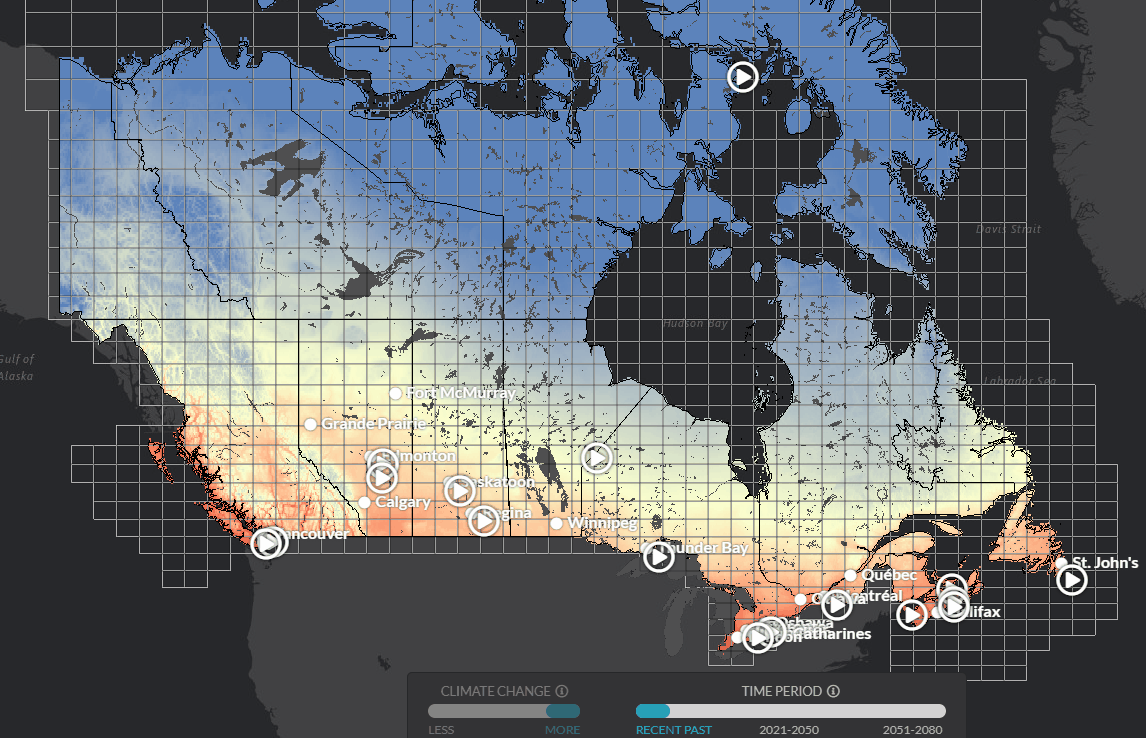Mean Temperature
The map below shows the 30-year average of the daily mean temperature for the time period under consideration (e.g., season, year).
The temperature range we expect within a season or year is a very important aspect of climate. Changes in average and extreme temperatures can dramatically affect our everyday lives as well as a wide range of planning and policy decisions.
The average temperature is an environmental indicator with many applications in agriculture, engineering, health, energy management, recreation, and more. The average temperature is used to compute a number of other maps and indices in this Atlas.
Very hot days (+30°C)
The map below shows the 30-year average of the annual number of Very Hot Days.
Very Hot Days are an indicator of summer heat.
High temperatures are important. They determine if plants and animals can thrive, they limit or enable outdoor activities, define how we design our buildings and vehicles, and shape our transportation and energy use. It is useful to know how high summer temperatures are likely to become in the future, to make sure that our cooling and air-conditioning systems can reliably deal with these extremes.
When temperatures are very hot, people - especially the elderly - are much more likely to suffer from heat exhaustion and heat stroke. Many outdoor activities become dangerous or impossible in very high temperatures. In general, Canadians are not used to extremely hot summers, and further warming will bring new and unusual risks as well as a very different experience of the summer season.
High, persistent temperatures increase the risk of drought, which can severely impact food production and increases the risk of wildfire. High temperatures can also lead to more thunderstorms, which means increased risks of flash flooding, lightning, hail and perhaps even tornadoes.
Frost-free season
The map below shows the 30-year average of the number of days between the Date of Last Spring Frost and the Date of First Fall Frost.
If projections show an increase in the length of the Frost-Free Season, then the annual growing season will be longer, and the period of cold weather correspondingly shorter.
Via www.climateatlas.ca



This post may contain affiliate links. As an Amazon Associate, I earn from qualifying purchases.